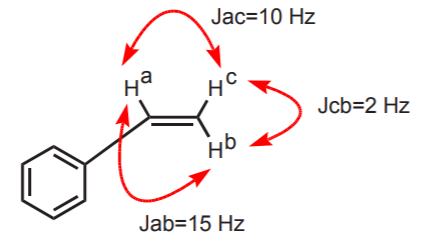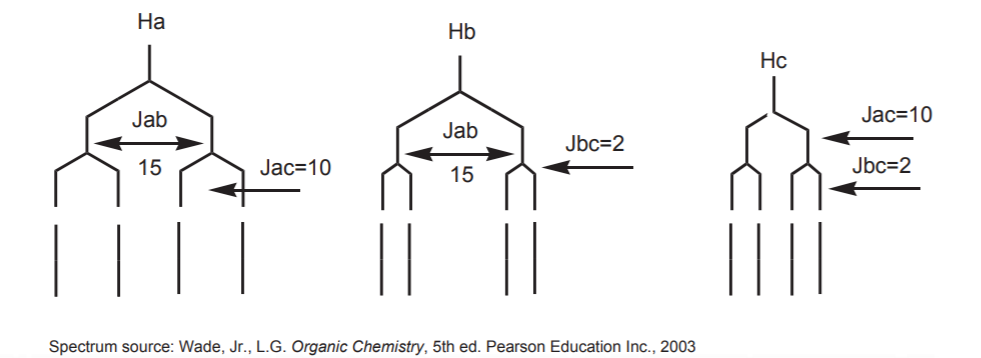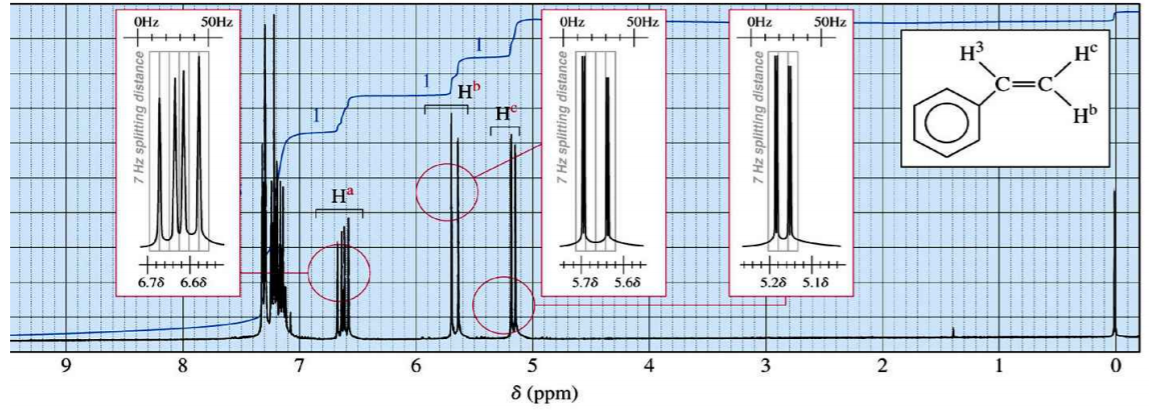25.2: Coupling Constants and Complex Splitting
- Page ID
- 214101
Signals split into several peaks due to the nearby presence of other protons which are not chemically equivalent to those under observation. Each of those protons is seen in two states which either reinforce or oppose the applied field, causing shielding and deshielding of the signal under observation. The multiplicity of the signal then depends on the number of such protons.

In this example the splitting between protons a and b follows the n+1 rule because the coupling constants between the two are identical. The overlap of what is actually four peaks makes the pattern appear as a triplet.
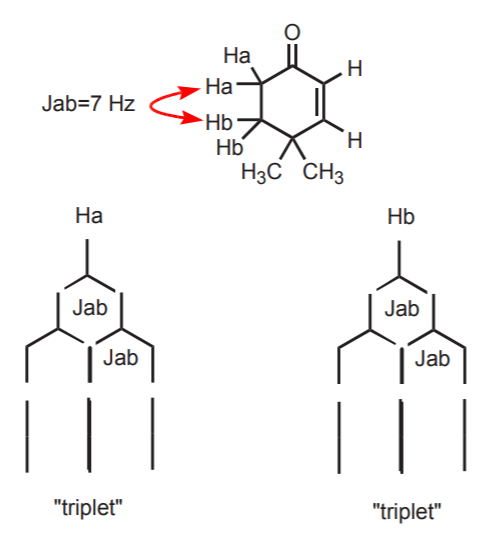
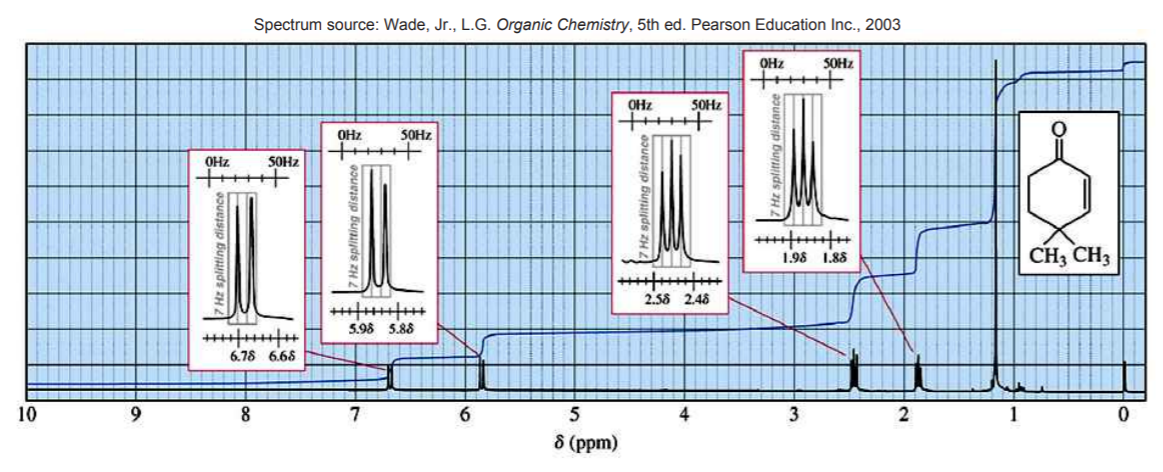
In this example the splitting between protons a, b, and c does not follow the n+1 rule because the coupling constants between all of these protons are different. The peaks do not ovelap to give the appearance of a simpler spectrum.
